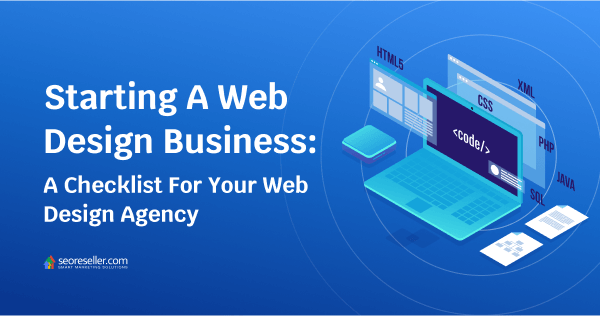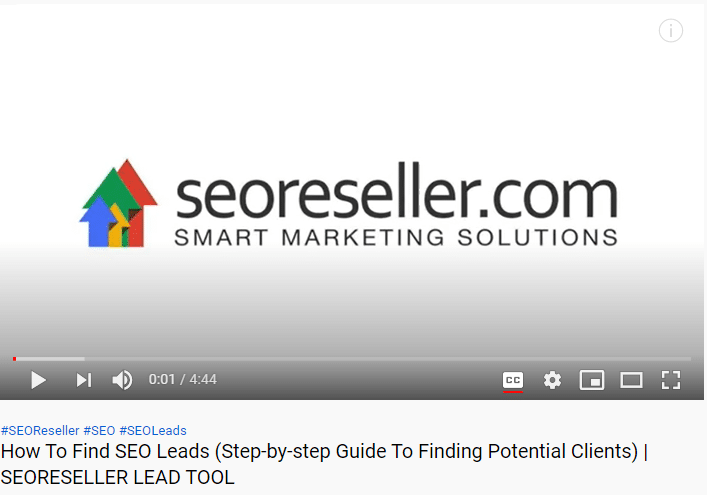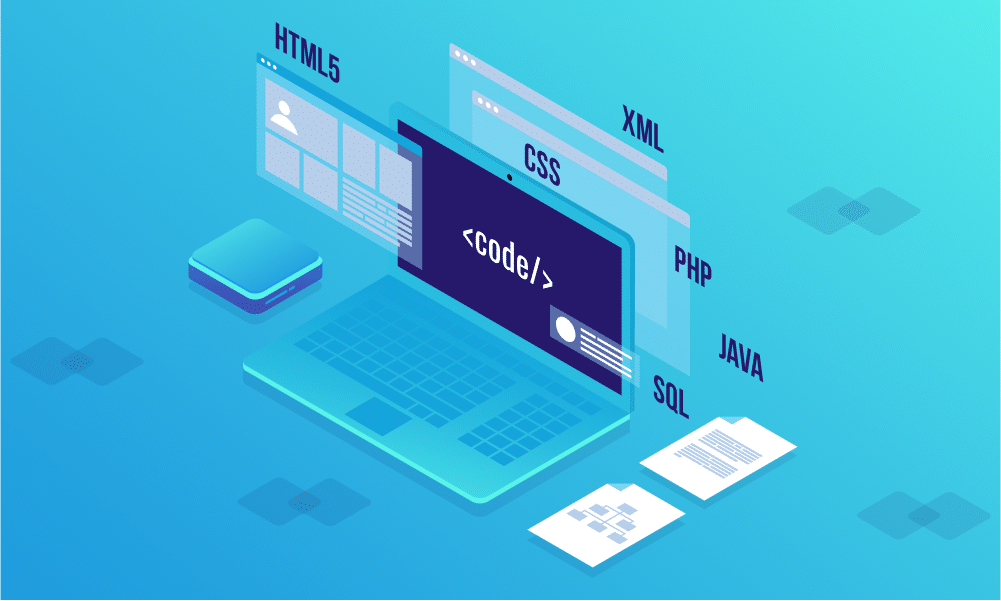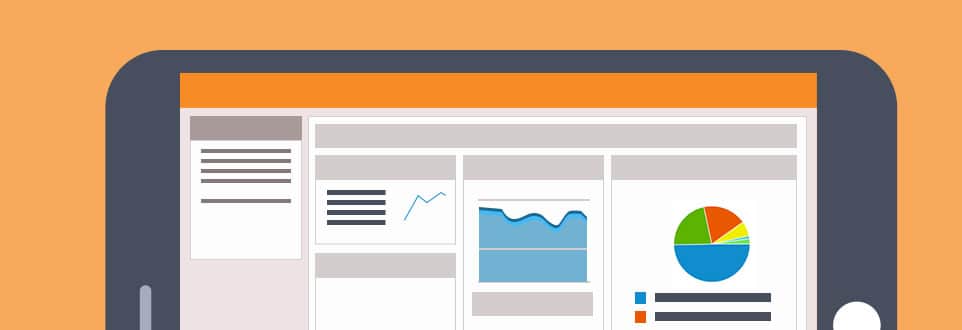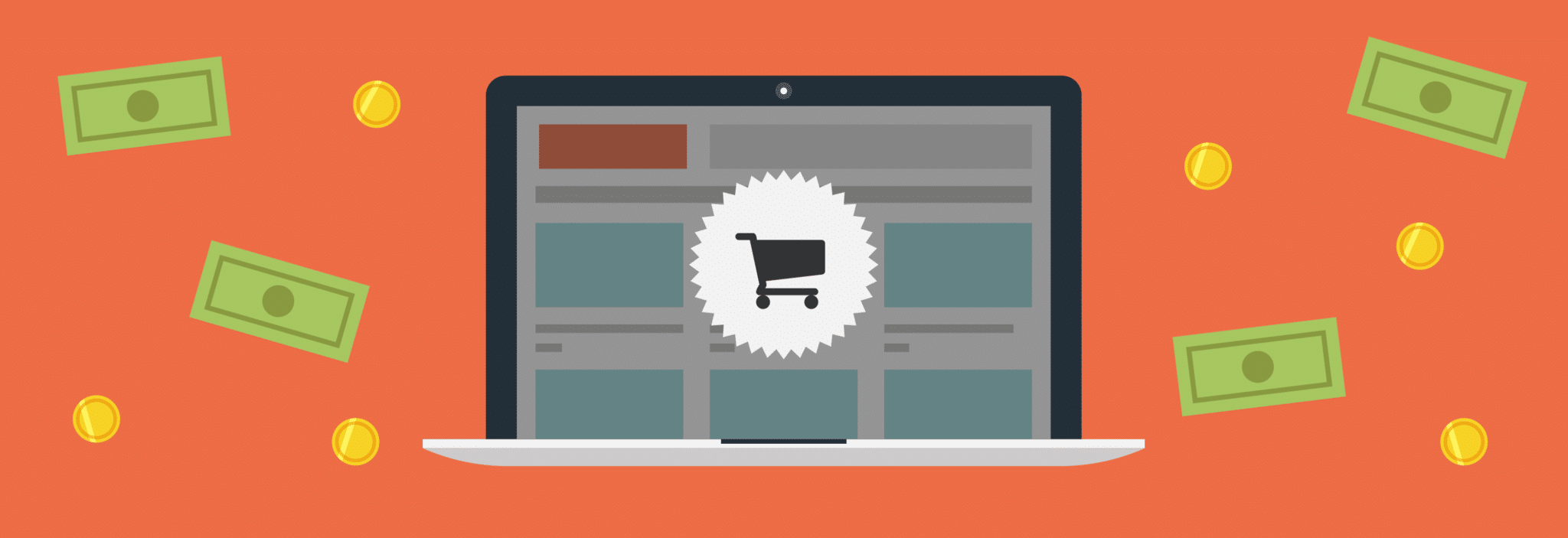Starting a web design business is more relevant now than ever, Covid-19 showed businesses just how much a good online presence can make it or break it for their business.
Although the demand for web design services is skyrocketing, it doesn’t mean that the road to success is a breeze. Like any other business, getting a venture off the ground is not a small feat.
Planning will go a long way, breaking down the big strategic goals into digestible tasks and milestones, will help you fully commit to making this venture thrive despite the challenges every business owner comes across in their first years.
We gathered a checklist to cover critical points to take into consideration before starting your website design business. I hope you find it useful.
1. Conduct Your Market Research
Like a travel plan to a foreign country you never set foot at before, market research is your first step into figuring out your journey before you start pouring funds and effort into it.
This will help you know who your potential customers are, learn more about them, and where to find them. This will guide you in conducting a competitive analysis to learn more about the different players in your industry and what will give your business that competitive edge.
Thorough market research will involve learning about economic trends, how the web design business is faring today, and consumer behavior.
Web design is a global service, so there’s a lot of opportunity in the worldwide market, that being said, there’s also a lot of competition. Before you dive into the deeper part of the ocean, it’s better to study your local area first. Research and dig out, who are your future competitors?
To have a better view of the opportunities, you should gather demographic information including population, age, kinds of businesses in the area, and anything related to your web design business.
Here’s a quick guide in conducting your market research:
- Is there a demand for web design or web development services?
- How many businesses, organizations, or people would be interested in your services?
- Learn about what the employment rate and income range are.
- What is your target location? Where are your web design clients located? What locations can your web design services be available in?
- What are the alternative options for your target customers?
- How competitive is your pricing?
Research can be conducted in different ways and you can do market research depending on what resources are available to you. You can even interview businesses you plan to target and ask them questions that will give you insight into how they think. Aside from interviews, you can do surveys and questionnaires too.
2. Decide Your Products and Services
Choosing which products and services to include in your offerings will take time, proper planning, and analysis. Web design and development (although in high demand) is still a competitive market and your offerings will determine the success or failure of your business venture.
Some questions you should ask:
- What is your target market looking for at the moment? Is it responsive websites? Simple static sites? Mobile apps or marketplace landing pages?
- Would you purchase this product yourself? Will your product be something you can proudly recommend to relatives and friends?
- Does it excite you? Do you look forward to selling your products to web design clients? Do you look forward to showing clients your web development solutions and website ideas? Without passion, the entrepreneurial spirit wanes off pretty quickly.
- Can you see yourself selling these products and servicing your potential market for the next 5 years? How about 10?
Once you’ve chosen the products and services you’re going to offer based on market research and some soul searching, it’s time to dig deeper and ask the following questions:
- What are the services you’re going to offer? Write a description per product, an elevator pitch.
- What are the value propositions? Why would someone get your service vs the competitor?
- What’s a reasonable price for them?
- Do you already know how to sell web design services or alternatively who’s going to sell them? Hiring salespeople is an entire book of its own.
- How are the services going to be delivered? Are you going to hire a web design services sub-contractor so that you can focus on client onboarding and scaling? Or do you plan on purchasing your own hardware or software and hiring an in-house team?
- How are you going to handle your web design project management process?
- How is the final output going to be delivered to the client?
- How will the project be monitored after close? What are the services included after a web design project has been completed?
As a web design agency, you have many growth opportunities. The job doesn’t end with just building a website. Other services are needed for it to continue running smoothly and ranking on search engines. Your web design agency can also include other in-demand services such as:
- Content creation
- Search engine optimization (SEO)
- Local SEO services
- PPC management services
- Website redesign and development services
- Link building services
- Social media management and more
A business will remain scalable as long as the product and services continue to expand. Strategize and build up your offering in a way that it will develop along with your clients’ needs.
There’s no question about timing when it comes to web design products and services. As long as search engines exist and as long as people are browsing the web, the demand for websites will keep on coming. Whether it’s building a new website, developing a responsive web design, providing local SEO services to a local business, or including SEO services for optimum website performance – the question is, which services and products are right for you?
3. Write Your Business Plan
Your business plan is the road map that will hold the underlying basis or principle of your business venture. It will contain how you will structure, run, and scale your web design business.
There are many formats you can use when creating a business plan. The important thing is to point out the key elements of your business in a way that’s clear to you, your clients, and potential investors.
In this article, we’ll discuss the more traditional elements of a business plan. You can create your outline depending on what suits your brand but make sure to include these sections in the document.
- Summary of your business
- Brand description
- Market and competitive analysis
- Management structure
- Services and products offered
- Business process and contracts
- Marketing and sales strategy
- Financial partnerships
- Financial Forecast (ROI projections)
- References, permits, and legal documents
A solid business plan will convince investors to join your company as well as attract the right clients to work with you.
4. Funding
At this stage, you will have an idea of how much money you’ll need to start your web design business. Every web design agency has different needs, there’s no one size fits all solution. For example, if your web design agency plans to have all processes in-house, then you have to consider the hardware, software, subscriptions, manpower, and monthly wages on top of your monthly bills. That would all change if you choose to outsource your web design projects because you wouldn’t require additional resources since your main job now is to manage clients and make sure that the outsourced projects are delivered to meet the clients’ expectations.
Some of the most common ways to fund businesses are:
Bootstrapping
Bootstrapping is another term for self-funding or using your own resources to build your business from the ground up. With this method, you get 100% ownership and control of your web design business. This means that you also handle all the risks on your own. You have to be thorough and careful with the expenses. Make sure to set a quota and never spend more than your set budget. To make sure that you’re on the right track you should check with a financial advisor first. It’s also recommended to talk and consult with web design agencies so that you have an idea and understanding of what options are open to you.
Getting Investors
Getting investors mean that you won’t have to handle everything on your own, this also means that other people will own a percentage of your business.
There’s no sure way to reel in an investor but there are processes and basic steps you can follow:
- Look for a willing investor
Look for venture capital firms or individual investors and make sure to do proper research before reaching out. You have to know if the investor you’re aiming for has experience working with startups and also a reputable one.
- Prepare your business plan
The investor will need to study your business plan so make sure that it is solid,
detailed, and that it meets their investing criteria. In business, location is very important so make sure that where you are and the location of your target market is clearly stated and justified.
- Go through the corporate documents
This will involve every data and legal documents about your business. The investors will need to know your core staff, web design products and services, government documents, financial documents, and permits.
- Prepare the contract containing the terms
Provide the terms and conditions that will be presented to the investors once they agree to invest. As your web design business grows, the contract will need to be adjusted too.
Getting a Business Loan
Another alternative to bootstrapping or taking in an investor is getting a business loan. This is an option if you want sole control of your entire business.
Getting loans involves contacting banks and credit unions to file a loan application. Do your research and see which one offers the best terms for your business. Like how you prepare for investors, you need to present a detailed business plan and financial sheet or projections. This will help you determine how much you need. These documents will be easier for the bank to review and justify your loan.
5. Decide on Your Location
Although the location in a web design business matters less and physical location does little in affecting client onboarding since the transaction and services are made online, location is still important. The choice of location will affect taxes and legal requirements so make sure to review where you set up your main office.
6. Build Your Team
A successful web design business depends on who you choose to bring on board. You want a team and a system that executes like clockwork. You can start by determining what skills you need.
- Web Design Project Manager. Your project manager will be responsible for speaking with the clients and making sure that what they want is relayed to the web designer. Whether you choose to outsource web design or have it in-house, you’ll be needing a project manager to make sure everyone understands the goal and vision of a project.
- Project Strategist. This is an expert who will come up with the website ideas and strategy to guide your clients.
- Web Designer. The web designer will be the one responsible for the design of the website. Make sure that you hire a skilled and experienced designer who can work with main e-commerce and website platforms. This way, no matter who your client is and no matter what industry, they can bring the vision and idea in action.
- Web Developer (Back-end and Front-end). The back-end is in charge of building the framework of the website. They’re the one who writes the code and makes sure that the website is performing as it should. The back end is also responsible for dealing with bug fixes and website testing. The front-end developer is in charge of the interface and making the website responsive. Responsive web design means that the website is functional across all devices. This is important because users are viewing a website on numerous devices, not just a desktop or a laptop. The front-end developer is responsible for making sure that the website looks good and works fast on all devices, may it be desktop, laptop, smartphones, or tablets.
- R&D and Tester. The R&D is in charge of researching and developing your existing products and services, they are also responsible for testing out websites on all devices.
- SEO Expert. The SEO expert is in charge of making sure that the website adheres to search engine guidelines and is optimized for search.
A successful web design agency has well-rounded people who specialize in many skills. This allows them to know what goes on in the different areas involved in building a website. Forming that dream-team can take time, not to mention, a lot of trials and errors. To save effort and energy, you can collaborate with an experienced white label web design agency. What this gets are full web design services under your name without the need to hire another team. Another benefit is that you get to learn how experienced agencies manage and work with multiple web design projects as well. You get to get a look at different ways they create web design proposals and web design contracts — while getting the web design services that you need for your clients. You can collaborate with many partners who specialize in areas that you are offering and passionate about like search engine optimization, content creation, PPC management, and more.
As the head of the agency, this is the right time to strategize and weigh the best option. The goal is to deliver high-quality services to your clients while maximizing productivity.
7. Name Your Agency
Most of the time, your agency’s name is your client’s first impression of your business. Make sure that they remember it. This means your business name should be memorable for both potential clients and investors. Take it as far as imagining what the domain name of your business website would look like and sound like. Take time to plan your agency’s name. Do you plan on staying as a web design agency forever or are you planning on expanding to a full digital marketing agency complete with social media, content management, and SEO services? Envisioning what your agency could grow into might help you in deciding which name to go for.
8. Create Your Contract and Proposal Templates
Contracts and proposals are crucial to the client on-boarding and closing process. Determining the process and creating the template will minimize your work in the future. Make sure to include a section that lets clients know the process, goals, and objectives of a website.
If you are focused on maximizing time, performance, and productivity then a partnership with a white label web design agency is worth looking into as the more experienced ones have web design management software that web design agencies can use to manage multiple campaigns.
Take for example our SEO dashboard. This is an SEO software that houses essential white label tools that can assist you in lead generation, to on-boarding process to closing a client and managing multiple campaigns. When it comes to creating proposals for web design services, you can use the proposal builder which will assist you in creating web design proposals for multiple campaigns. Complete with portfolio, quotation, and if needed, project reports.
9. Set site launch and project close processes
You also have to set the website launch process. At the end of the day, the client’s website should be flawless and ready to go. Here’s a guideline of what you should check before launching a website:
- Functionality
- Site speed
- Responsive web design
- SEO
- Content
- Calls-to-action
- Web analytics
- Security
- HTML and CSS validation
- Google verified
- 301 and 404 pages
- Image optimization
- Themes are on point and updated
10. Marketing and Branding
Set your brand for success by making sure that its story and messaging resonate with the audience. Determine your style and values then let them be heard in your brand voice. Have a clear and unique value proposition that connects with your target audience. Put yourself in your clients’ shoes and try to feel how they feel at this time and situation. Try to imagine what kind of message they want to hear, what level of sensitivity they want to hear it, and what tine.
Here are some guide questions that can tell you which features of your agency you should highlight:
- Why should your clients choose your agency over others? What makes you better than them?
- What makes your web solutions better?
- Why should they hire an agency?
Create your website
Your website will be the space online which houses your brand. It should display what services and products you’re offering as well as your body of work. When a visitor enters your website, they should automatically feel inspired and excited about working with you.
Start small if you must. If you have yet to build a website portfolio then a white label digital marketing agency can provide you with the resources and services you need to show potential clients, designed to highlight your strengths and brand name as well. You can also do volunteer work and create websites for free to add to your portfolio.
Here are some sections that you should include in your business website:
- A strong about page
- Who you are and what’s your story
- Services Page
- Body of work or samples
- Customer Reviews (if any)
- Contact information
- Credentials and award
11. Find Web Design Clients
How do you find web design clients? Finding clients is a challenging task for any business, especially when you’re just starting. In the beginning, your clients will most likely come from the following: acquaintances, referrals, prospects you’ve encountered at events, and people you’ve connected with on social media sites.
The keyword here is visibility. People will always need web design services, whether it’s to build a new website, fix an issue or update an existing one, what you need to do is be visible to these potential clients so that they know about you and know how to contact you.
Here are a few tips you can do to find web design clients:
- Search Engines. You can use search engines to find businesses by entering the location you’re targeting and the business that you want or your chosen niche. For example “Italian Restaurant in New York” or “Dentist in Los Angeles”. Results will be pulled up from different listings and you just have to manually check which ones don’t have a website yet or if they do, which websites need to be updated.
- Cold Calling. This is a more one-on-one, human-to-human form of lead generation. Contacts can come from anywhere. They can be an establishment in your local area or a business from another country. You have to be extra careful when conducting cold calls since many tend to get sensitive when it comes to this strategy.
- Cold Emailing. One of the most effective methods of connecting with a potential client and lead nurturing. Learning how to do cold email properly is a valuable skill. It’s a combination of strategy and art that will appeal most to potential leads.
- Use a Lead Finder Tool. Finding web design clients can be similar to finding SEO leads. Where SEO leads are qualified if businesses have websites but aren’t optimized for search, web design leads, on the other hand, are either businesses that don’t have a website yet or those who do but need a web design overhaul.
What a lead finder does is generate a list of leads that you can introduce to your services. Manually looking for leads can take days (up to weeks), considering this is an ongoing task, you can’t afford to spend that much time. Using a tool like the lead finder can present you with the information you need and it’s up to you to choose which one to pursue. The video below will give you insights on how the lead finder tool can generate web design clients for your business.
Ready To Start Your Web Design Business?
Building a successful web design business, like any business, will come with its challenges. From finding the right process that suits your style, building the right team, getting your name out there, and more, but unlike most businesses, this is one industry that’s primed for scaling.
As long as people continue to populate search engines like Google, and so long as consumers browse the web for products and services in the safety of their own homes, websites will continue to be an invaluable business asset.
The first step is always the hardest. Though once you’ve got the hang of the business and tested a few processes, it will come naturally. You’ll be able to ride the wave easily. Success doesn’t happen overnight. It requires careful research and planning, hiring the right people, and adapting the right process. Remember that as a business owner, communication is important. Communicating your client’s vision with the web design team is key to a winning formula.
This is an exciting venture you’re taking on, but remember you’re not alone and you can always consult with experts to learn how to start your web design business and grow it successfully.
